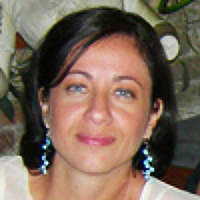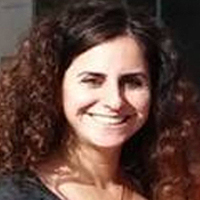Impact of coronavirus pandemic on safety and time of administration of subcutaneous immunotherapy among pediatric patients
Published on: 2nd September, 2022
OCLC Number/Unique Identifier: 9617323801
Introduction: Allergen immunotherapy is the only targeted therapy that can modify the natural course of allergic diseases. In pediatric patients, SCIT with aeroallergens is an effective treatment and should be considered as a preventive strategy in the treatment of allergic diseases, even though one of the major concerns about it is its safety. The main purposes of this study were to assess the safety of SCIT ultra-rush schedules with polymerized extracts in a pediatric population and to determine the impact of the COVID-19 pandemic on the safety and time of administration of subcutaneous immunotherapy among pediatric patients.Methods: A retrospective medical records review of patients under 18 years of age undergoing SCIT was made and re-scheduling due to restrictions imposed by the COVID-19 pandemic was recorded. Results: A total of 192 pediatric patients were included. Fifty-nine (31%) had local reactions and systemic reactions were not reported. In March 2020, the first case of COVID-19 was diagnosed in Portugal and all non-urgent appointments and procedures were postponed. In our group of pediatric patients, 43 (22%) were referred to primary care, 38 (20%) stopped AIT definitively and 111 (58%) maintained administrations in the hospital. Only 2 (2%) of them had reactions upon reinitiation. Conclusion: In this study, the ultra-rush protocol using polymerized extracts was safe in pediatric patients. Although the effectiveness of AIT may be compromised due to prolonged suspension of the treatment, it is important to note that despite longer interruptions, administrations may continue without compromising safety, maintaining shorter visits and a lower number of injections.
Design and optimization of mRNAs encoding an Anti-TIGIT antibody with therapeutic potential for cancer in TIGIT-humanized BALB/c Mice
Published on: 7th April, 2023
mRNA drugs are synthesized using cell-free systems without complex and stringent manufacturing processes, which makes their preparation simple, efficient, and economical. Over the past few years, mRNAs encoding antibodies have been one of the research frontiers of antibody drug development. In cancer immunotherapy, mRNAs encoding immune checkpoint antibodies may be advantageous regarding antibody persistence and durability of the anti-tumor immune response of patients. In our previous study, a candidate antibody—AET2010—targeting the novel immune checkpoint TIGIT was reported. Its anti-tumor activity was also investigated using adoptive transfer of NK-92MI cells in a xenograft mouse model, but the limitations of the model did not facilitate precise evaluation. In the present study, we further investigated the therapeutic potential of AET2010 for cancer in TIGIT-humanized BALB/c mice. Next, we explored the design, synthesis, and optimization of mRNAs encoding AET2010 and ultimately obtained a candidate mRNA (mRNA-BU) with favorable in vitro and in vivo expression levels of active AET2010. Particularly, lipid-nanoparticle-encapsulated mRNA-BU delivered to mice produced AET2010 with significantly higher peak concentration and expression duration than an equivalent dose of original AET2010. This study provides a sound basis for developing novel drugs targeting TIGIT.
Aortic dissection complicating carotid dissection and myocardial infarction
Published on: 18th March, 2021
OCLC Number/Unique Identifier: 8982641722
A 58-year-old hypertensive man presented to our insti-tution with acute chest pain and dizziness. Electrocardiogram revealed inferior wall myocardial infarction with suspected right ventricular involvement (Figure 1A). Computed tomographic aortography (CTA) depicted ascending aortic dissection (AAD) with involvement of bilateral carotid, subclavian, and right common iliac arteries (Figure 1B). Replacements of aortic valve and ascending aorta with CABG (Ao-RSVG1-LAD and Ao-RSVG2-RCA) were conducted.
Prevalence and Associated Factors of Hypoglycemia among Severe Acute Malnourished Children who admitted in East Gojjam Zone Public Hospitals from 2018 to 2021, Northwest Ethiopia, 2022. Multi-center Retrospective Cross Sectional Study
Published on: 29th April, 2024
Background: Globally, severe acute malnutrition (SAM) remains a major killer of children under 5 years of age. The highest magnitude is seen in sub-Saharan Africa, including Ethiopia. Hypoglycemia is the most common complication of severe acute malnutrition (SAM) and the most life-threatening condition in pediatric society. This study aimed to assess the prevalence of hypoglycemia and its associated factors among under-five children with severe acute malnutrition.Methods: A cross-sectional retrospective study was conducted among 378 randomly selected samples who were admitted to public hospitals in the East Gojjam zone from 2018 to 2021. Data was extracted from the medical records of the children and entered into SPSS version 26, Variables with a p – value < 0.25 in the Bivariate analysis were candidates for multivariable logistic regression and those with a p – value < 0.05 in the multivariable analysis were considered as having a statistically significant association with hypoglycemia among severe acute malnutrition.Results: Out of 378 respondents, 50 (13.2%) had hypoglycemia with severe acute malnutrition patients. Children admitted between the ages of 0-6 months were 2.93 (AOR = 1.57-6.25, p = 0.000), shocks were 4.6 (AOR = 1.25-17.42, p = 0.034), and fully immunized children were (AOR: 2.61 (1.01- 6.77, p = 0.048) was significantly associated with hypoglycemia with severe acute malnutrition. Conclusion and recommendation: The prevalence of hypoglycemia with severe acute malnutrition was 13.2%. We also recommend a longitudinal study should be done among children who develop hypoglycemia with severe acute malnutrition to determine the long-term consequences, especially the neurodevelopmental sequelae associated with this condition.
To be and not to be: With wisdom and grace or stupidity and disgrace after the SARS-CoV2 outbreak
Published on: 3rd April, 2020
OCLC Number/Unique Identifier: 8572768607
The day before yesterday, it was shameful for some politicians, especially President Trump, to label SARS-CoV2 virus as discriminatory “Chinese Virus”. Politicians should be more professional and graceful, and distance themselves from the independence of the academy if something remains unknown to them. Besides, there were two months for President Trump to prepare the Americans for this Virus [1]; unfortunately, could he have given more attention to his duty of anti-SARS-CoV2 action, despite spending time to defending against the impeachment of his presidency? Besides, in line with this idea, presidential candidate Hillary Clinton wrote: ”The president is turning to racist rhetoric to distract from his failures to take the coronavirus seriously early on, make tests widely available and adequately prepare the country for a period of crisis. Don’t fall for it. Don’t let your friends and family fall for it”.
An Executive Information System: Inherent Information and Functional Information
Published on: 31st October, 2023
This review article deals with quantum biology, the new tool that helps traditional biology unravel some mysteries concerning life and living organisms on Earth. We use Einstein’s famous equation to explain how an unknown energy realm creates the material universe. We demonstrate how material existence precedes living existence and elucidate how non-living atoms transition to living molecules, Francis Crick’s faded dream that comes to reality. Finally, we expose the two types of Information available inside a cell to sustain life in living organisms and elaborate on a new formulation of the biogenesis theory.
The Effectiveness of Honey-Based Ferric Perchloride Paste on Post-conization in the Cicatricial and Infectious Context: A Randomized Clinical Trial
Published on: 7th November, 2023
Introduction: The skills, the techniques utilized in the conization and the hemostasis directly affect the healing process of the cervix tissue. Excessively large excisions and unnecessary use of electrocautery or hemostatic sutures are examples of procedures that may negatively affect the scar cascade and wound healing. Objective: The purpose of this study was to examine the effectiveness of honey-based ferric perchloride paste (HBFPP) in reducing bleeding and infection post-conization procedure. Methods: Prospective randomized clinical trial with a sample of 142 patients randomized in two groups: 78 patients who used the HBFPP (intervention) and 64 patients who did not use the HBFPP (control). Statistical analysis was performed utilizing a significance level of 95%. The Chi-Square test and Fisher’s exact test were applied. Results: Results showed that the mean score of the amount of blood lost was lower in the intervention group compared to the control group. The main complaints reported by the two groups in the postoperative period were discomfort in the genitourinary system, heavy bleeding after surgery, and post-operative infection, but not significantly different among both groups. The control group needed further intervention due to excessive bleeding in comparison with the intervention group. Conclusion: The use of HBFPP reduced the amount of blood lost in the postoperative period of conization surgery.
Non-invasive physical plasma as an innovative physical approach for the oncological therapy of skeletal sarcomas
Published on: 21st September, 2022
Human osteosarcoma is the most common malignant bone tumor with an annual incidence of two cases per 1 million population. Osteosarcoma account for 60% of all malignant bone tumors occurring in childhood, followed by Ewing’s sarcoma [1-3]
Painful unilateral gynecomastia with identification of the cause of the pain: A case report
Published on: 31st December, 2021
OCLC Number/Unique Identifier: 9382574194
A 69-year-old man presented with a one-month history of a painful mass in the right breast. Pathologic evaluation of the excision of the mass revealed a proliferation of both glandular and stromal elements consistent with gynecomastia. In addition, histologic examination revealed peripheral nerves in the deep portion of the specimen were entrapped in the proliferative changes associated with gynecomastia. It is proposed that the expansile proliferation led to compressive pressure on the nerves and caused the pain associated with gynecomastia.
A case of coexistent acute severe alcoholic and Q fever hepatitis: The useful contribution of repeated liver biopsies
Published on: 23rd September, 2022
Acute Q fever is a worldwide zoonotic infection due to C. burnetii that may be associated with hepatitis. Nonspecific clinical and biological manifestations may accompany liver involvement, including hepatomegaly and elevated liver biological tests. However, the presence of jaundice is rare. Therefore, making a diagnosis of Q fever hepatitis may be difficult in an afebrile patient with jaundice of recent onset, altered liver function tests, excessive alcohol intake and no reported contact with animals. We report here the diagnostic work-up and complex clinical management of a patient presenting with acute hepatitis resulting from both C. burnetii infection and severe alcoholic steatohepatitis. Positive serology together with a detailed examination of the liver biopsy was able to reveal the coexistence of both Q fever hepatitis with typical fibrin-ring granulomas as well as florid lesions of alcoholic steatohepatitis. A combination of antibiotics, hydroxychloroquine and steroids, guided by the helpful description of changes in histological alterations on repeated liver biopsies during the course of the disease contributed to the slow but favorable outcome.




